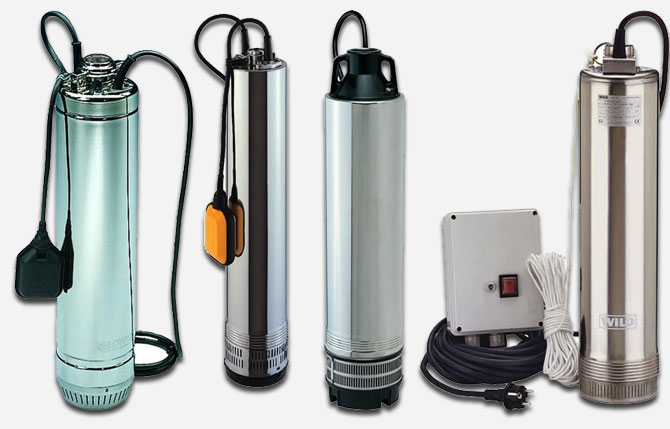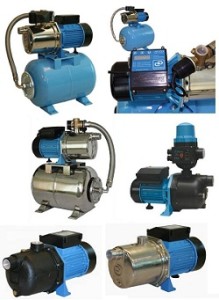We clean the well with a drainage pump
Alexei 27.01.2015 Pumping stations
There is a well in many household plots. It is a simple and at the same time an effective source of water in those places where there is no centralized water supply, and the technology of its construction in our area has been developed for centuries.
But over time, the wells fall into disrepair, and the water in them ceases to be crystal clear.
To prevent this from happening, they, like any technical structure, must be cleaned regularly. Such work can be carried out in different ways. One of them is cleaning the well with a pump. Freed from sand, silt or quicksand, your source will again be filled with clear clean water. And its quality will return to the previous indicator.
When to Clean a Well
It is not possible to determine the specific timeframe for carrying out maintenance work in advance. The periods between cleanings can be different in duration and depend on many different factors. For example, an important role in the contamination of the well is played by the hydrobiological characteristics of the household plot. It also depends on what materials were used in its arrangement.
Watch the video for what you need to clean:
In general, cleaning the well manually or with a drainage pump is carried out if:
- The water continues to be cloudy even after passing through the filter;
- An unpleasant odor came from the well;
- An oil film floats on the surface of the extracted liquid;
- The water level has dropped significantly.
It is clear that in all such cases it is impossible to delay the cleaning work. Dirty and foul-smelling moisture can pose a serious health risk to anyone who ingests it. And if the lack of financial opportunities does not allow you to attract good specialists for cleaning, then you can do it yourself. Installing a water drainage pump in the well will help to do this. How to do this, we will try to cover in this article.
Types of pumps and their scope
The main purpose of this equipment is pumping liquid. In wells, it is used when the degree of water pollution is not yet too significant. But in general, the scope of drainage pumps is very wide. They can be used in the following cases:

Currently, there are two types of drainage devices:
- Submersible;
- Surface.
The most popular and widely used by summer residents and owners of suburban housing are pumps of the first type, which in turn are divided into vibration and centrifugal. Each of them has advantages and some disadvantages. But all of them can be used to restore the normal functioning of the water source.
A drainage pump of any kind for a well is characterized by ease of operation, low cost, the possibility of self-assembly and replacement.
Features of submersible equipment

submersible pumps
The main advantages of these pumps are the following:
- Little weight;
- Long service life;
- Small dimensions;
- Versatility;
- High performance;
- They can work in automatic mode.
The disadvantages include the fact that the drainage water pump for the well cannot work from depths of more than 20 meters. Its effectiveness drops already at the level of 10 meters. And, of course, the water raised with it is not purified, so it can lead to contamination of the system into which it is supplied.
Features of surface pumps
 The advantages of this type of device include:
The advantages of this type of device include:
- The high power of the pressure of the pumped water, which makes it possible to transfer it to several tens of meters;
- Absence of breakdowns that are possible in submersible analogues when working in a liquid medium;
- Possibility of installation indoors without supplying the mains to the well;
- The equipment can work continuously.
A drainage pump of this type for a well also has disadvantages. In particular, it cannot be used to clean deep springs. It emits noise during operation, as a result of which placement in special technical rooms is required. The operation of the suction line requires certain skills and abilities.
Equipment installation
The installation of the pump is quite simple, but in order for it to work in the future without breakdowns and emergencies, the installation should be carried out adhering to certain rules.
When buying equipment, be sure to check the availability of all components and carefully read the attached instructions. The operation and specifications of different models may vary significantly. Experts advise to pay attention to the limitations in the application.
Watch the video, cleaning steps:
Step-by-step instructions for installing a drainage pump look like this:
- First, the hose is connected to the pressure pipe, using the necessary connecting elements.
- If there is a float switch, a non-return valve must be installed on the pressure line.
- A device with a three-phase electric motor is checked for correct rotation. For this equipment is placed on a horizontal surface and immediately turned off after switching on. If the pump shaft turns clockwise, then everything is correct. Otherwise, the phases will have to be reversed.
- The pump is installed in a position in which the discharge pipe is directed upwards.
- The unit sinks to the bottom of the well.
When operating the equipment, safety precautions must be observed; in case of the slightest malfunction, it is necessary to turn off the power supply.
Proper operation and cleaning of the well
When choosing the required model, the instructions should be carefully studied also for the reason that some drainage pumping mechanisms can initially pump only clean water, without impurities. If heavily soiled, they will soon fail. Cleaning a silted well is only possible with a drainage pump that can handle the pumping of contaminated fluid with various impurities, including small fibers.
Routine work will be easier to carry out if. It is a mechanism that floats on the surface and, when the device reaches the bottom, turns it off. In its absence, the operation of the pump must be monitored to avoid overheating of the engine, which is above the water level.
Watch the video for some tips:
It is very important to properly configure the device for further trouble-free operation. Good cleaning of well water is possible only when creating turbulences in it, which will destroy all existing deposits. To do this, do the following:
- Immerse the mechanism to a depth at a distance of not more than one meter from the bottom;
- We direct the outlet pipe back to the well, as a result of which the water will begin to move in a circular motion along the walls, destroying the deposits on them and at the very bottom;
- Periodically lift the device and clean its filter.
After a thorough cleaning of the well with a drainage pump, it can be left at the bottom in order to continue to maintain the purity of the water in the future. In this case, experts recommend cleaning the filters in it at least once every six months.
Overview of popular models
Domestic buyers are most in demand pumps of the following brands:
- Wilo Drain T. M. 32/7−10 m (Germany);
- Grundfos Unilift K.P.
- Karcher SDP 5000 (Germany);
- Makita PF1010 (Japan);
- Whirlwind DN-900 (Russia).
The popularity of products from Germany and Japan is due to their reliability and good performance. The casing of the Danish pump is made of stainless steel and, thanks to the presence of a vertical float switch, can operate in automatic mode.
The domestic unit has a power of 900 W and is capable of pumping very dirty water. Its cost is 2200 rubles, which is consistent with the declared quality.
Outcome
Drainage equipment is an indispensable thing in the household on any adjacent plot. With it, you can pump out water from the basement, when it is flooded, from the pond, when removing silt. And, of course, you can easily deal with any contamination of the well with it. We have already described how to do this above.



